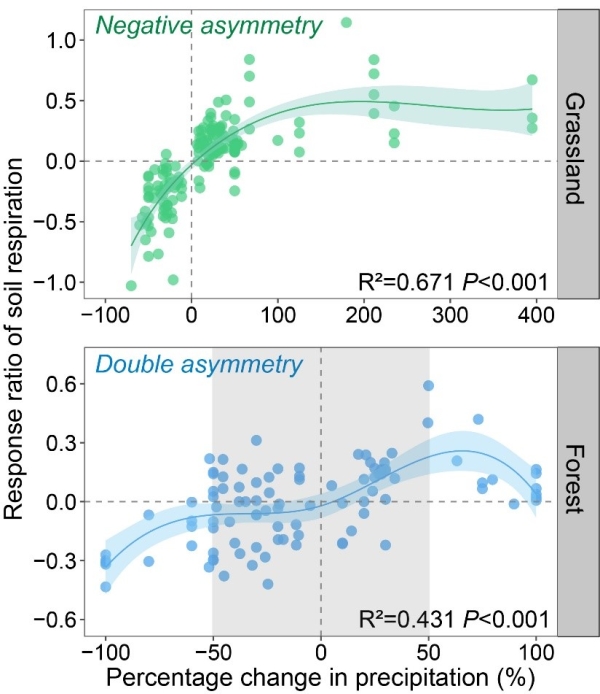

Intensification of the Earth’s hydrological cycle amplifies the interannual variability of precipitation, which will significantly impact on terrestrial carbon cycle. However, it is still unknown whether previously observed relationship between soil respiration and precipitation remains applicable under extreme precipitation change.
To address this question, the postdoctor DU Yue from South China Botanical Garden of Chinese Academy of Sciences, under the joint guidance of Prof. YAN Junhua and WANG Yingping, conducted a global synthesis of observations from a large dataset of field experiments (248 published papers including 151 grassland studies and 97 forest studies) across a wide range of precipitation-manipulation.
The response of soil respiration to precipitation change was highly nonlinear or asymmetric, and differed significantly between grasslands and forests, between moderate and extreme precipitation changes. Soil respiration response was negatively asymmetric (concave-down) in grasslands, and double-asymmetric in forests with a positive asymmetry (concave-up) under moderate precipitation changes and a negative asymmetry (concave-down) under extreme precipitation changes. The different asymmetric responses of soil respiration between grasslands and forests will greatly improve our ability to forecast the carbon cycle consequences of increased precipitation variability. Specifically, the negative asymmetry of soil respiration response under extreme precipitation change suggests that the soil carbon efflux will decrease across grasslands and forests under future precipitation regime with more wet and dry extremes.
This study entitled “The response of soil respiration to precipitation change is asymmetric and differs between grasslands and forests” was published in Global Change Biology. For further reading, please refer to: https://doi.org/10.1111/gcb.15270.

Figure. Relationships of response ratios of soil respiration with percentage changes in precipitation in grasslands and forests

